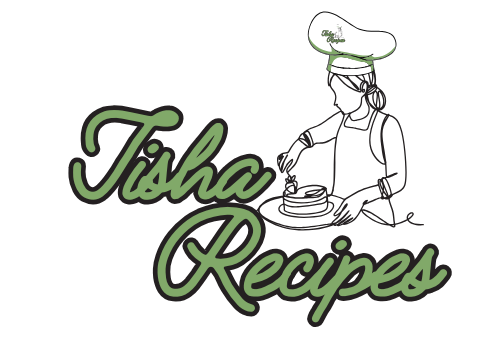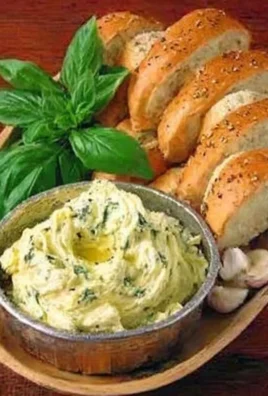
Coleslaw is a timeless dish that transcends cultural boundaries, offering a delightful mix of crunch, creaminess, and zest. A classic accompaniment to barbeques, sandwiches, and picnics, this versatile salad has been reimagined countless times. While traditional recipes emphasize simplicity, adding a tangy dressing elevates its flavor profile, making it the centerpiece of any meal. This guide will take you through the preparation of a flavorful coleslaw with tangy dressing, focusing on tips, techniques, and a foolproof recipe.
Overview of Coleslaw
Coleslaw is a salad made primarily of shredded cabbage, often mixed with carrots and other vegetables. It is typically dressed with mayonnaise, vinegar, or a combination of both, allowing for variations that suit different tastes. The dish’s name originates from the Dutch term “koolsla,” which translates to “cabbage salad.” Over the centuries, coleslaw has evolved, embracing regional ingredients and culinary traditions.
Global Variations
- Classic American Coleslaw: Features mayonnaise, vinegar, sugar, and sometimes celery seeds.
- Asian Slaw: Includes sesame oil, soy sauce, and fresh ginger for a bold flavor.
- German Krautsalat: Made with lightly cooked cabbage and a vinegar-based dressing.
- Mexican Curtido: Incorporates lime juice, jalapeños, and oregano for a spicy twist.
Each variation highlights the adaptability of coleslaw, making it a universal favorite.
Brief History and Cultural Significance
The origins of coleslaw trace back to ancient Rome, where cabbage was often dressed with vinegar and spices. However, its modern form took shape in the Netherlands during the 17th century. Dutch settlers introduced coleslaw to America, where it became a staple at diners and family gatherings. Today, coleslaw is a symbol of comfort food, cherished for its simplicity and versatility.
Cultural Impact
Coleslaw has become a side dish synonymous with American barbeque culture. It is also a key component of several iconic dishes, such as pulled pork sandwiches and fried chicken platters. Its refreshing crunch provides a perfect contrast to rich, smoky flavors.
Preparation Phase & Tools to Use
Prep Time, Cook Time, Cool Time, Total Time, Servings, Yield
- Prep Time: 20 minutes
- Cool Time: 15 minutes (optional, for chilling before serving)
- Total Time: 35 minutes
- Servings: 6-8
- Yield: Approximately 6 cups of coleslaw
Essential Tools and Equipment
- Cutting Board: A sturdy surface for slicing vegetables.
- Sharp Knife or Mandoline: For precise and uniform shredding.
- Mixing Bowls: Various sizes for combining ingredients.
- Whisk: To emulsify the tangy dressing.
- Grater or Food Processor: Optional, for quickly shredding carrots.
- Measuring Cups and Spoons: Ensures accuracy in ingredient proportions.
Importance of Each Tool
Using the right tools enhances efficiency and consistency. For example, a mandoline produces evenly shredded cabbage, while a whisk ensures the dressing emulsifies properly.
Preparation Tips
- Cabbage Selection: Use fresh, firm heads of green or purple cabbage for the best texture.
- Dry Vegetables Thoroughly: Excess moisture can dilute the dressing, so pat vegetables dry with paper towels.
- Slice Thinly: Uniformly thin slices allow the dressing to coat each piece evenly.
- Chill the Coleslaw: Letting it sit in the refrigerator enhances the flavor as the ingredients meld.
Ingredients List (with Measurements)
Core Ingredients
- 1 medium head of green cabbage (about 6 cups, shredded)
- 1 medium carrot (1 cup, shredded)
- ½ cup red onion (thinly sliced)
Tangy Dressing Ingredients
- ½ cup mayonnaise
- 2 tablespoons Dijon mustard
- 2 tablespoons apple cider vinegar
- 1 tablespoon honey (or sugar)
- 1 teaspoon celery seeds
- Salt and black pepper to taste
Optional Additions
- ½ cup chopped parsley for freshness
- ¼ cup dried cranberries for sweetness
- 1 tablespoon poppy seeds for texture
Step-by-Step Instructions
Step 1: Prepare the Vegetables
- Remove the outer leaves of the cabbage and cut it into quarters.
- Slice the cabbage thinly using a sharp knife or mandoline.
- Peel and grate the carrot.
- Thinly slice the red onion.
Step 2: Make the Dressing
- In a medium-sized bowl, whisk together mayonnaise, Dijon mustard, apple cider vinegar, honey, and celery seeds.
- Season with salt and black pepper to taste.
- Adjust sweetness or tanginess by adding more honey or vinegar as desired.
Step 3: Combine Ingredients
- In a large mixing bowl, combine the shredded cabbage, carrots, and red onion.
- Pour the tangy dressing over the vegetables.
- Toss everything thoroughly to ensure the dressing coats the vegetables evenly.
Step 4: Chill and Serve
- Cover the bowl with plastic wrap or transfer the coleslaw to an airtight container.
- Refrigerate for at least 15 minutes to allow the flavors to meld.
- Before serving, toss again to redistribute the dressing.
Side Dish Recommendations
Coleslaw pairs wonderfully with a variety of dishes, complementing their flavors and textures. Below are eight side dish ideas that can elevate your coleslaw-serving experience:
1. Classic Barbeque Ribs
The smoky, rich flavor of barbeque ribs is perfectly balanced by the crisp, tangy freshness of coleslaw. The contrast between the bold spices of the ribs and the creamy coleslaw creates a harmonious pairing.
2. Fried Chicken
Crispy fried chicken and creamy coleslaw are a match made in heaven. The cool and tangy salad provides a refreshing counterpoint to the crunchy, seasoned chicken.
3. Grilled Salmon
The light, flaky texture of grilled salmon benefits from the crunch of coleslaw. A citrusy variation of the tangy dressing can further enhance the pairing, highlighting the salmon’s natural flavors.
4. Pulled Pork Sandwiches
Pulled pork sandwiches are often served with coleslaw, either as a topping or on the side. The coleslaw adds a creamy and zesty element that cuts through the richness of the pork.
5. Baked Potatoes
A baked potato topped with sour cream, cheese, and chives pairs beautifully with coleslaw. The salad adds a fresh element to the hearty potato.
6. Veggie Burgers
For a vegetarian option, pair coleslaw with a flavorful veggie burger. The tangy dressing complements the burger’s ingredients, making each bite more satisfying.
7. Grilled Corn on the Cob
Sweet and smoky grilled corn gets a flavor boost when paired with coleslaw. Together, they create a vibrant and colorful plate.
8. Roasted Vegetables
Roasted root vegetables, such as sweet potatoes, carrots, and parsnips, pair well with coleslaw. The salad’s crunch adds contrast to the soft texture of the roasted vegetables.
Each of these side dishes brings out unique aspects of the coleslaw, making it a versatile and indispensable addition to your meals.
Nutritional Information & Health Benefits
Coleslaw is not only delicious but also packed with nutrients. The combination of fresh vegetables and a tangy dressing offers a range of health benefits.
Nutritional Breakdown
- Cabbage: High in vitamins C and K, cabbage also contains fiber, which aids in digestion. It is low in calories but rich in antioxidants.
- Carrots: A great source of beta-carotene, carrots support eye health and immune function.
- Red Onions: Contain quercetin, an antioxidant known for its anti-inflammatory properties.
- Tangy Dressing: Depending on the ingredients, the dressing can provide healthy fats and additional flavor. Using apple cider vinegar adds probiotics, promoting gut health.
Health Benefits
- Improved Digestion: The fiber in cabbage and carrots promotes regularity and supports a healthy gut microbiome.
- Antioxidant Support: The vitamins and antioxidants in the vegetables help combat oxidative stress, reducing the risk of chronic diseases.
- Heart Health: Cabbage contains compounds that support cardiovascular health, while the healthy fats in the dressing can help maintain good cholesterol levels.
- Low-Calorie Option: Coleslaw is a satisfying dish that can be enjoyed as part of a balanced diet without adding excessive calories.
Customizing the dressing to include healthier alternatives, such as Greek yogurt or olive oil, can further enhance its nutritional profile.
Common Mistakes to Avoid & How to Perfect the Recipe
Creating the perfect coleslaw requires attention to detail. Avoid these common mistakes to ensure your dish is a success.
Common Mistakes
- Using Too Much Dressing
- Overdressing can make the coleslaw soggy. Start with less dressing and add more gradually.
- Skipping the Salting Step
- Salting the cabbage before mixing helps to draw out excess moisture, preventing a watery salad.
- Not Letting It Chill
- Skipping the chilling phase reduces the time for flavors to meld, resulting in a less flavorful dish.
- Overcomplicating the Recipe
- Adding too many ingredients can overpower the coleslaw’s simplicity.
- Improper Storage
- Storing coleslaw improperly can lead to spoilage or loss of crunch.
How to Perfect the Recipe
- Shred Uniformly: Ensure the cabbage and other vegetables are shredded evenly to achieve a consistent texture.
- Balance Flavors: Taste the dressing before mixing it with the vegetables. Adjust the sweetness, tanginess, or seasoning as needed.
- Use Fresh Ingredients: Fresh cabbage and carrots yield the best results, both in flavor and texture.
- Serve at the Right Temperature: Coleslaw is best served chilled, making it a refreshing addition to any meal.
Tips, Notes, Storing, and Reheating
Tips for Perfect Coleslaw
- Choose the Right Cabbage: Opt for firm heads of green or purple cabbage for the best crunch and flavor.
- Customize the Dressing: Adjust the balance of acidity and sweetness in the dressing to suit your palate. Adding a splash of lime or lemon juice can brighten the flavors.
- Add Texture: Incorporate nuts, seeds, or dried fruits to introduce texture and additional flavor.
- Keep It Fresh: Prepare the coleslaw as close to serving time as possible for maximum crispness.
- Make It Your Own: Experiment with herbs like cilantro, parsley, or dill to add a unique twist to the recipe.
Notes
- Dietary Adaptations: For a healthier version, substitute mayonnaise with Greek yogurt or use a light mayo. To make it vegan, choose plant-based mayo and omit honey.
- Flavor Variations: Add spices like paprika, cumin, or mustard powder to the dressing for a bolder flavor.
- Serving Ideas: Coleslaw can be served as a side dish, in wraps, or as a topping for burgers and tacos.
Storing Coleslaw
- Refrigeration: Store coleslaw in an airtight container in the refrigerator for up to 3 days.
- Avoid Freezing: Freezing is not recommended as the vegetables will lose their crunch and the dressing may separate.
Reheating
Coleslaw is best enjoyed cold or at room temperature. Reheating is not recommended, but if necessary, gently warm it in a skillet on low heat for a short time. However, this may affect the texture and flavor.
FAQs
1. Can I make coleslaw in advance?
Yes, you can prepare coleslaw up to a day in advance. However, store the vegetables and dressing separately to keep the salad crisp. Toss them together just before serving.
2. How do I prevent coleslaw from becoming soggy?
Salting the cabbage before mixing it with other ingredients helps draw out excess moisture. Rinse and pat it dry before combining it with the dressing.
3. What are some alternative dressings for coleslaw?
You can try a vinaigrette-based dressing, a creamy buttermilk dressing, or an Asian-inspired sesame and soy sauce dressing.
4. Can I use pre-shredded vegetables?
Yes, pre-shredded cabbage and carrot mixes are convenient options. Ensure they are fresh and crisp before using.
5. How can I make coleslaw more colorful?
Incorporate red cabbage, shredded beets, or bell peppers to add vibrant colors. Garnish with fresh herbs for an appealing presentation.
6. What proteins pair well with coleslaw?
Coleslaw pairs excellently with grilled chicken, smoked salmon, pulled pork, or even fried tofu for a vegetarian option.
7. Is coleslaw suitable for meal prep?
Yes, coleslaw is great for meal prep as long as you store the dressing separately. Toss together right before eating to maintain its texture.
8. How can I reduce the sweetness of the dressing?
Balance the sweetness by adding extra vinegar or lemon juice. A pinch of salt can also help tone down the sweetness.
9. Can I make coleslaw spicy?
Yes, add sliced jalapeños, chili flakes, or a dash of hot sauce to the dressing for a spicy kick.
10. Is coleslaw gluten-free?
Traditional coleslaw is gluten-free, but always check the dressing ingredients, especially store-bought versions, for hidden gluten.
Conclusion
Coleslaw with tangy dressing is a dish that embodies versatility and simplicity, making it a favorite for all occasions. Whether you’re hosting a backyard barbecue, preparing a quick lunch, or looking for a vibrant side dish, this recipe offers a balance of crunch, creaminess, and zest. By following the detailed tips, variations, and preparation techniques outlined in this guide, you can create a coleslaw that is not only delicious but also visually stunning and nutritious. With a few tweaks and personal touches, this classic dish can be transformed into your signature recipe, delighting family and friends every time.




Leave a Comment